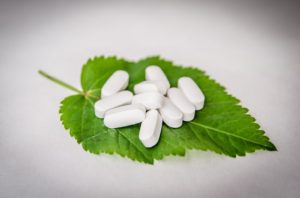 Kratom can be a natural product produced from Mitragyna speciosa, a plant native to Southeast Asia. Traditionally used as a medicinal herb, it increasingly is being used for recreational functions and remains valid and widely used in the USA.
Kratom can be a natural product produced from Mitragyna speciosa, a plant native to Southeast Asia. Traditionally used as a medicinal herb, it increasingly is being used for recreational functions and remains valid and widely used in the USA.
Kratom’s leaves contain numerous alkaloids, including mitragynine and 6-hydroxymitragynine, which are considered to behave as agonists in the μ-opioid receptor. Mitragynine also might have agonist activity at post-synaptic receptors, as well as antagonist action at receptors.
Kratom is available as leaves, powdered leaves, or gum. It may be eaten, brewed to tea, or mixed with liquid and ingested. Effects are dose-dependent; lower doses have a tendency to produce a stimulant effect and high doses generate an undesirable impact. The usual dosage is 2 to 10 g. Users can require Kratom to undergo euphoria or analgesiato self-treat opioid withdrawal signs and signs.
Kratom withdrawal syndrome shares several attributes of antique opioid withdrawal such as:
- diarrhea
- rhinorrhea
- cravings
- anxiety
- tremor
- myalgia
- sweating
- irritability
The demand for “legal highs”, an intoxicating artificial or natural substances that aren’t prohibited by law, continues to increase. Teenagers can use these substances, which might be widely available on the internet, on “head shops,” and in petrol stations.
Such compounds often cause adverse psychiatric and medical impacts, exemplified by recent reports concerning the dangers of using synthetic cannabinoids and synthetic cathinones. Although these two substances are now illegal in many jurisdictions, other publication substances of abuse stay legal and widely available, including Kratom and methoxetamine.
Because these substances usually are not detectable on conventional urine toxicology screens, clinicians will need to know about them to have the ability to take a precise substance usage history, consider possible dangerous interactions with prescribed psychotropics, and address psychiatric and medical ailments.
Additionally, many users assume that these chemicals tend to be safer compared to illegal chemicals. New and potentially dangerous chemicals are being produced so fast vendors are able to stay ahead of regulatory efforts. When one substance has been declared prohibited, still yet another related substance immediately can be found to take its place. To provide the very most effective care for the clients, it’s crucial for psychiatrists to stay up-to-date about these novel substances.

